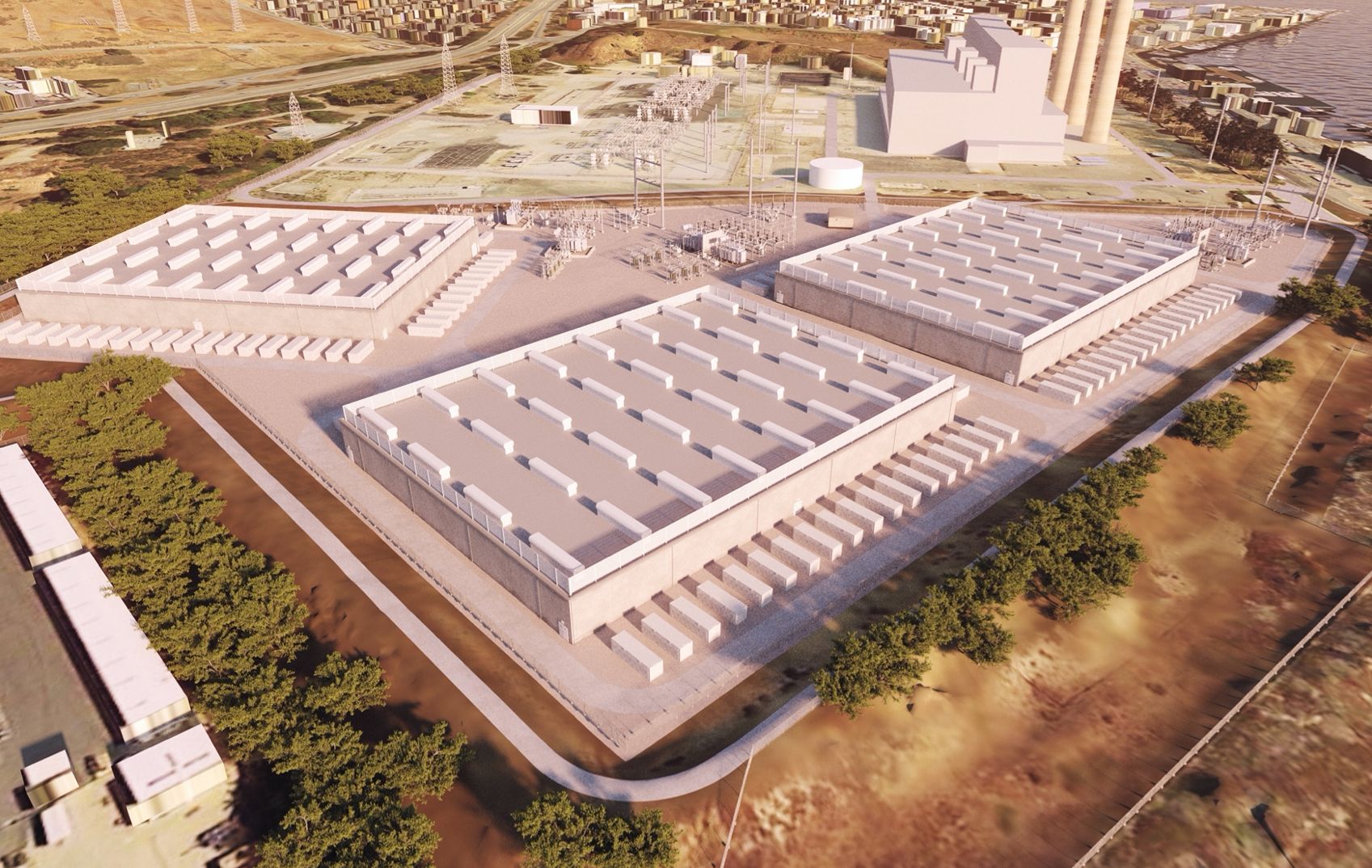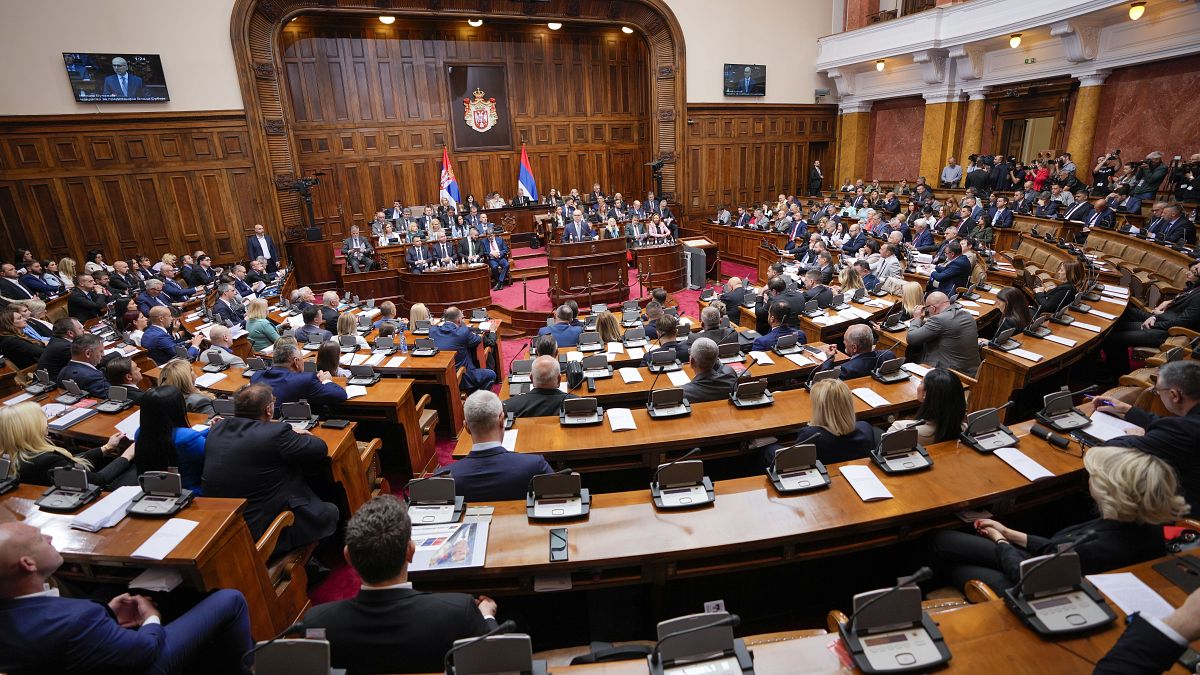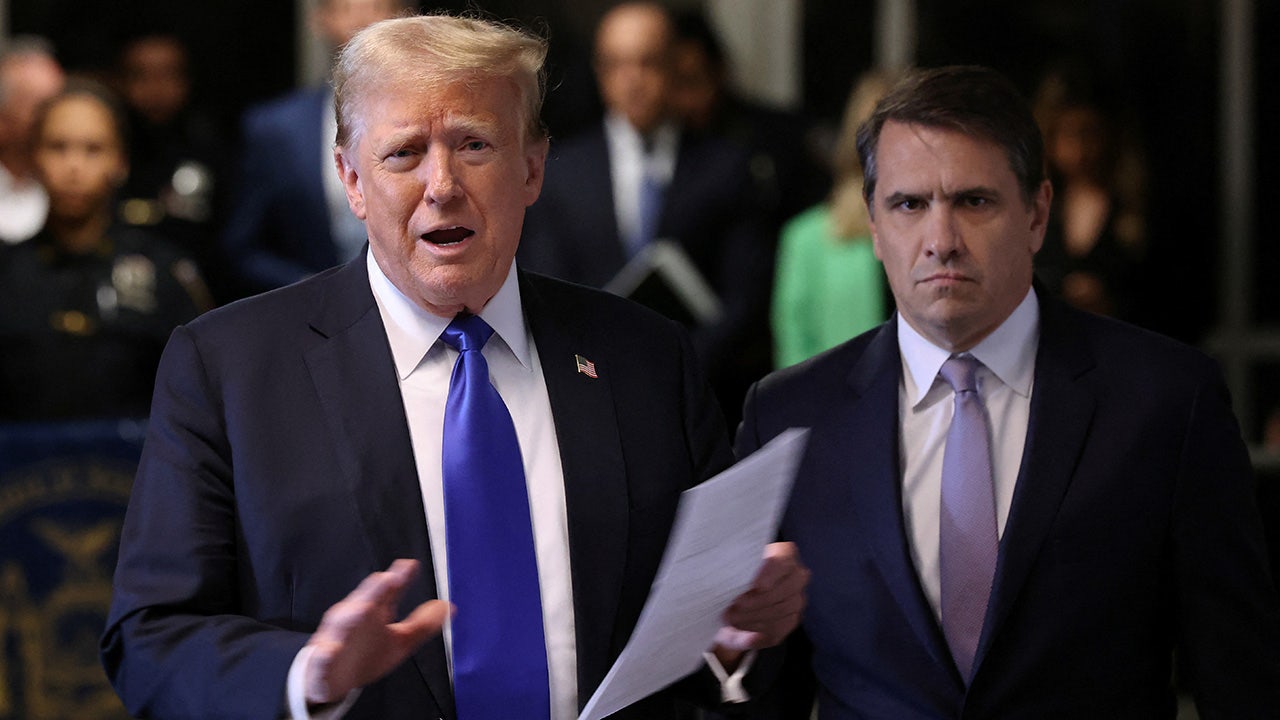California
California program to lease land under freeways faces scrutiny after major I-10 freeway fire

By JULIE WATSON and AMY TAXIN | Associated Press
LOS ANGELES — The area under an elevated Los Angeles freeway that burned last weekend was a kind of open-air warehouse with businesses storing everything from wood pallets to cardboard boxes to hand sanitizer on lots leased by the state through a little-known program that now is under scrutiny.
The blaze Saturday burned about 100 support columns, forcing the closure of a vital mile-long stretch of Interstate 10 near downtown that is used by hundreds of thousands of people daily. It could take crews working around the clock between three and five weeks to repair the freeway, Gov. Gavin Newsom said.
Newsom said the state would reassess the practice of leasing land under roads to bring in money for mass transportation projects.
Details of that program remain opaque. Newsom’s office directed questions about whether the state has any regular inspection protocols to state transportation officials. The California Department of Transportation, known as Caltrans, did not respond to questions about inspections or provide information about how many properties the state leases.
State Assemblymember Miguel Santiago, who represents part of downtown Los Angeles, said officials should disclose how many sites are leased under the program, the terms of contracts, how much money the program generates and how the state ensures companies comply with the contract requirements.
“Some of those actions could have prevented what we now see happened underneath the 10,” Santiago said.
Apex Development Inc. has leased the land under Interstate 10 since 2008. One condition of Apex’s contract stipulated it not allow flammable or hazardous materials to be stored there.
The fire that spread quickly over 8 acres (3 hectares) was fed by pallets, cars, construction materials and other items being stored under the freeway in an industrial neighborhood. No injuries were reported but at least 16 homeless people living in an encampment there were taken to shelters.
No arrests have been made and Newsom has said investigators are trying to determine if more than one person was involved in what officials said was likely arson.
Prior to the fire, state officials filed a lawsuit against Apex saying the company stopped paying rent last year and owes $78,000.
The lawsuit also says Apex was subleasing to six other companies. That can be legal if the company received permission from state and federal regulators but Apex did not, Newsom said.
Apex has confirmed the litigation but has not answered other questions through a lawyer.
Owners of two of the companies that subleased the property said they had warned of fire danger and other hazards related to homeless people living under the freeway. Luis Cartagena of Eagle Wood Services said he decided to stop using the space for his wood pallet business more than a year ago because he was losing so much to theft.
“Since day one there was a lot of homeless people there, drug dealing, prostitution and there was a lot of theft,” he said. “I couldn’t leave anything.”
Rudy Serafin said he’s been leasing space under I-10 from Apex since 2009. He uses it to store supplies for businesses in the garment district including hangars, boxes and bags. He also stores office supplies including hand sanitizer, which is flammable.
He estimates he lost $800,000. “I don’t know what I am going to do. I am 49 years old. I have no other resources. This is my livelihood. This is what I feed my kids with,” he said.
Serafin said he’s been unable to get insurance for his business because of concerns about homeless people using cooking fires in the area. He said he and other businesses called the city repeatedly to request a cleanup of the encampment. The city removed homeless people from the space once, and then encampments quickly returned, he said.
The city didn’t respond to a request for comment about whether they had received complaints or removed people from the site. Los Angeles Mayor Karen Bass on Monday warned against assumptions that homeless people had started the blaze.
Serafin said he and other contractors received a notice from the state transportation agency in May saying Apex wasn’t paying its rent. Serafin and other business owners then decided to stop paying Apex, but then lost access to their properties. They resumed paying and tried to work directly with Caltrans but the agency’s lawyer said he couldn’t negotiate with them, Serafin said.
Serafin said he signed a contract with Apex back in 2009 but could no longer find it.
The danger of storing flammable materials under elevated interstates has drawn the scrutiny of federal investigators in the past. After a 2017 fire collapsed a section of Interstate 85 in Atlanta, the National Transportation Safety Board criticized the Georgia Department of Transportation’s decision to store construction materials beneath the bridge without assessing the fire risk. The department said it immediately changed storage practices.
California Fire Marshal Daniel Berlant said investigators have identified where Saturday’s fire started and what caused it after sorting through the rubble for evidence, but did not specify what they found. He had no information on a suspect and said investigators are talking to witnesses, including homeless people and nearby business owners.
An estimated 300,000 vehicles use the stretch of freeway daily, which runs east-west across the heart of the metropolis and connects with other major freeways. The city has been urging people to avoid the area, take buses and trains, or work from home.
___
Taxin reported from Orange County, California. Associated Press writers Sophie Austin in Sacramento, California, Christopher Weber and Stefanie Dazio in Los Angeles, Jeff McMurray in Chicago, and Anisha Frizzell in Atlanta contributed to this report.

California
California politicians weigh in on Trump’s conviction, but Garvey remains notably mum

Trump reacts to guilty verdict after jury convicted him on all 34 felony charges
Donald Trump was found guilty of falsifying business records to hide a hush money payment to adult film actress Stormy Daniels.
Former President Donald Trump’s conviction Thursday spurred an avalanche of reactions from some of California’s leading political figures in the hours following the jury’s historic announcement.
As the most populous state in the nation and a Democratic stronghold, the Golden State has brandished itself a cradle of Democrat-led MAGA opposition ever since the 2016 election. Though the state has a Democratic super-majority, a handful of Republican-held districts are expected to be among the tightest and most consequential races in the bid for House control. Any impacts of Trump’s conviction in these districts are unclear at this point, but a steady trickle of comments from Republican and Democratic party leaders may offer a glimpse into how the verdict will play into in campaign messaging aimed at undecided and moderate voters.
More: Trump guilty, now what? Why the verdict isn’t the most shocking part of the trial
California GOP, Democratic party leaders weigh in on Trump verdict
California Republican Party Chairwoman Jessica Millan Patterson called the decision a “dark day,” alleging a “politically-motivated case brought by a far-left district attorney” in a statement released a few hours after Trump’s 32-count guilty verdict was read.
“Despite Democrat-led efforts to interfere with the presidential election, Americans will have the final say this November when they re-elect President Trump and send him back to the White House to fix the many failures of the Biden administration and put our nation on a pathway to success,” Patterson said.
Claims popularized by Trump and his allies in the Republican Party of election interference, rigging and other types of fraud have been repeatedly disproven by independent experts and election officials.
More: Don’t be fooled: 5 types of misinformation we expect this election season
The state’s Democratic party chair Rusty Hicks released his own statement on the verdict as well, striking a jubilant tone in stark contrast to Patterson’s “dark day.”
“Today, the People of New York have returned a guilty verdict and rendered Donald Trump a convicted felon,” Hicks said in a statement on X. “In November, the American People will render him a two-time loser for President. And California Democrats are going to do our part to make it so.”
Candidates for California’s U.S. Senate seat Schiff and Garvey
In California’s race to fill the late-Dianne Feinstein’s Senate seat, Trump’s shadow looms large over Republican candidate Steve Garvey, who has repeatedly refused to clarify his level of support for the former president. While Trump is a potential poison pill for the Republican candidate in deep-blue California, it’s long been a political rallying cry for his opponent.
Congressman Adam Schiff, D-Burbank, catapulted onto the national stage for leading the prosecution in Trump’s first impeachment trial. In debates before the March 5 primary, he often brought up Trump’s name, echoing many other leading Democrats in positioning himself as a bulwark against Trump an MAGA Republicanism.
More: Trump found guilty in hush money trial ahead of convention, November election. What’s next?
More: How will Donald Trump’s guilty verdict hit his reelection bid? Is his political fallout here?
Schiff celebrated the Manhattan jury’s decision in a Thursday post on X, formerly Twitter, minutes after the verdict.
“Today, twelve ordinary American citizens found a former president guilty of dozens of felonies,” Schiff said in the Thursday post. “Despite his efforts to distract, delay, and deny — justice arrived for Donald Trump all the same. And the rule of law prevailed.”
As of Thursday afternoon, Garvey has not released public comment on the verdict.
California’s House members take to social media
Republican Tom McClintock, representing the 5th Congressional District in the Central Valley and Sierra Nevada Foothills, said the verdict “perverts the rule of law.” In his post on X, he calls the prosecutor “poisonously partisan” and the jury pool “contaminated.”
Republican Doug LaMalfa called it a “miscarriage of justice,” mirroring McClintock and Patterson in claiming the prosecution was partisan. He went one step further, claiming the judge “purposely rigged the entire process” to ensure a guilty verdict.
Democrat Eric Swallwell said on the social media platform Thursday that Trump’s conviction is a win for the rule of law and for “the idea that we all follow the same rules.”
One of California’s two ranking House Democrats, Rep. Ted Lieu, said on X: “In America, no one is above the law: not the rich, not the powerful, and certainly not any former President of the United States.”
Kathryn Palmer is an elections fellow for USA TODAY. Reach her at kapalmer@gannett.com and follow her on X @KathrynPlmr.
California
California advances measures targeting AI discrimination and sexually abusive deepfakes

SACRAMENTO, Calif. (AP) — As corporations increasingly weave artificial intelligence technologies into the daily lives of Americans, California lawmakers want to build public trust, fight algorithmic discrimination and outlaw deepfakes that involve elections or pornography.
The efforts in California — home to many of the world’s biggest AI companies — could pave the way for AI regulations across the country. The United States is already behind Europe in regulating AI to limit risks, lawmakers and experts say, and the rapidly growing technology is raising concerns about job loss, misinformation, invasions of privacy and automation bias.
READ MORE: Tech giants sign voluntary accord to combat election deepfakes generated with AI
A slew of proposals aimed at addressing those concerns advanced last week, but must win the other chamber’s approval before arriving at Gov. Gavin Newsom’s desk. The Democratic governor has promoted California as an early adopter as well as regulator, saying the state could soon deploy generative AI tools to address highway congestion, make roads safer and provide tax guidance, even as his administration considers new rules against AI discrimination in hiring practices.
With strong privacy laws already in place, California is in a better position to enact impactful regulations than other states with large AI interests, such as New York, said Tatiana Rice, deputy director of the Future of Privacy Forum, a nonprofit that works with lawmakers on technology and privacy proposals.
“You need a data privacy law to be able to pass an AI law,” Rice said. “We’re still kind of paying attention to what New York is doing, but I would put more bets on California.”
California lawmakers said they cannot wait to act, citing hard lessons they learned from failing to reign in social media companies when they might have had a chance. But they also want to continue attracting AI companies to the state.
Here’s a closer look at California’s proposals:
Fighting AI discrimination and building public trust
Some companies, including hospitals, already use AI models to define decisions about hiring, housing and medical options for millions of Americans without much oversight. Up to 83% of employers are using AI to help in hiring, according to the U.S. Equal Employment Opportunity Commission. How those algorithms work largely remains a mystery.
One of the most ambitious AI measures in California this year would pull back the curtains on these models by establishing an oversight framework to prevent bias and discrimination. It would require companies using AI tools to participate in decisions that determine results and to inform people affected when AI is used. AI developers would have to routinely make internal assessments of their models for bias. And the state attorney general would have authority to investigate reports of discriminating models and impose fines of $10,000 per violation.
AI companies also might soon be required to start disclosing what data they’re using to train their models.
Protecting jobs and likeness
Inspired by the months-long Hollywood actors strike last year, a California lawmaker wants to protect workers from being replaced by their AI-generated clones — a major point of contention in contract negotiations.
The proposal, backed by the California Labor Federation, would let performers back out of existing contracts if vague language might allow studios to freely use AI to digitally clone their voices and likeness. It would also require that performers be represented by an attorney or union representative when signing new “voice and likeness” contracts.
California may also create penalties for digitally cloning dead people without the consent of their estate, citing the case of a media company that produced a fake, AI-generated hourlong comedy special to recreate the late comedian George Carlin’s style and material without his estate’s permission.
Regulating powerful generative AI systems
Real-world risks abound as generative AI creates new content such as text, audio and photos in response to prompts. So lawmakers are considering requiring guardrails around “extremely large” AI systems that have the potential to spit out instructions for creating disasters — such as building chemical weapons or assisting in cyberattacks — that could cause at least $500 million in damages. It would require such models to have a built-in “kill switch,” among other things.
The measure, supported by some of the most renowned AI researchers, would also create a new state agency to oversee developers and provide best practices, including for still-more powerful models that don’t yet exist. The state attorney general also would be able to pursue legal actions in case of violations.
Banning deepfakes involving politics or pornography
A bipartisan coalition seeks to facilitate prosecuting people who use AI tools to create images of child sexual abuse. Current law does not allow district attorneys to go after people who possess or distribute AI-generated child sexual abuse images if the materials are not depicting a real person, law enforcement said.
A host of Democratic lawmakers are also backing a bill tackling election deepfakes, citing concerns after AI-generated robocalls mimicked President Joe Biden’s voice ahead of New Hampshire’s recent presidential primary. The proposal would ban “materially deceptive” deepfakes related to elections in political mailers, robocalls and TV ads 120 days before Election Day and 60 days thereafter. Another proposal would require social media platforms to label any election-related posts created by AI.
California
$600 million battery storage project meets resistance in California

An artist’s conception of the proposed battery storage project, formerly the site of the power plant’s tank farm. Image courtesy of Vistra Corp.
Editor’s note: This story was originally published by Inside Climate News. It appears here as part of the Climate Desk collaboration.
By some criteria, 1290 Embarcadero in Morro Bay, Calif. seems like a prime site for a facility to store renewable energy.
This swath of coastal land houses a power plant that was shuttered a decade ago and its still standing smokestacks. Vistra Corp.’s proposal for a 600-megawatt battery storage project on a portion of the site includes remediating the entire area and removing the plant and stacks, readying the land for future development. And the site’s history as a power plant means it’s well-positioned to connect to existing transmission lines.
“The location is fantastic, and certainly the need is there in the California grid,” said Mark McDaniels, Vistra’s vice president of renewables and storage, at an April 24 community meeting.
But some locals in the small city on California’s Central Coast disagree, and placed a measure on the ballot this fall that could impact the project’s future. Project opponents say they’re concerned about its impacts on tourism and the potential for fires at the facility, with one resident calling the proposal a “toxic bomb” during the meeting.
California recently surpassed 10,000 megawatts of battery storage capacity, marking a 1,250 percent increase since 2019. At one point on April 19, batteries were the largest source of power to the state’s grid for the first time. And in the inland Southern California town of Menifee, a 680-megawatt storage project replacing an old gas plant will be among the largest battery reserves in the United States.
California draws a growing share of its electricity from the sun during the day, but the sun sets as Californians come home from work and turn the lights on, creating demand that usually must be filled by fossil fuels. Battery storage allows power companies to generated by solar panels and windmills for when the sun isn’t shining and breezes are calm.
The state still will need nearly 42,000 additional megawatts of energy storage capacity by 2045 to meet its goal of using 100-percent clean electricity that year. But in some communities like Morro Bay, proposed storage projects have been met with heated opposition.
This local pushback demonstrates the tension between the desire for “really high quality local permitting” and the state’s push for “really rapid transformation of the whole electricity grid and rapid deployment of energy storage,” which will require the speedy issuing of permits, said Mariko Geronimo Aydin, co-founder and chief energy economist at Lumen Energy Strategy, which last year completed an analysis of the state of battery storage in the state for the California Public Utilities Commission.
“I think ultimately, we want to have both; we don’t want one at the expense of the other,” said Geronimo Aydin.
Vistra Corp. proposed the Morro Bay battery storage project in 2020, and the project is currently in the draft environmental impact report stage, with that document open for public comments through the end of May. The project is awaiting consideration by the city’s planning commission and city council.
But the ballot measure put forth by local opposition group Citizens for Estero Bay Preservation would reroute that process by requiring approval by a majority of voters. Last year, the group gathered enough signatures—10 percent of the city’s registered voters—to place Measure A-24 on the ballot.
Back in 2021, the city changed the land-use designation of the shuttered power plant from “Industrial” to “Visitor Serving/Commercial,” and for the energy storage project to move forward, the city council would need to vote to change the designation to again allow industrial uses. If the ballot measure is approved, it would freeze the current land-use designation of the property and a few others in the area and then require a majority of voters to approve another change in the land-use designation.
“We felt that kind of facility basically in the center of our tourist area is inappropriate. Our whole town is based on the tourism economy,” said Barry Branin, a member of the group behind the ballot measure.
Instead, he says the battery storage project should go somewhere more inland in the agricultural valleys east of Morro Bay, or “out in the middle of the desert somewhere,” near existing renewable energy projects.
“All of the people from the valley like to come to Morro Bay, and if I knew there was going to be a battery facility. . . I wouldn’t want to bring my family to Morro Rock,” said Branin. “So why deprive the rest of the state of the use of the coast for some economic reason?”
Branin also argues that inland residents use more air conditioning than people living on the coast, so “the batteries should be near the users who have the air conditioners that are really demanding the electricity (at night).”
The argument underlies a key intersection of California’s climate and housing crises: For years, housing development has stagnated along the generally wealthier coasts as residents resist new development, pushing more Californians inland to communities at higher risk of extreme heat events.
Vistra says the project would support both the state’s energy needs and the local community.
“Our proposed plan puts ratepayers and residents of Morro Bay first by utilizing pre-existing interconnection infrastructure, while allowing for the eventual master planning and redevelopment of the remaining property to improve the Embarcadero area and allow for increased public access for the benefit of future generations,” reads a statement attributed to Claudia Morrow, senior vice president of development for Vistra.
And not building large-scale storage at sites with existing transmission infrastructure like the former power plant in Morro Bay “would lead to higher costs for the electricity system as a whole,” said Geronimo Aydin.
Citizens for Estero Bay also cites concerns over potential fires at the battery facility, pointing to the nearby example of Vistra’s Moss Landing in Monterey County, where in September 2022 a faulty smoke detector triggered water releases on the battery racks, which caused short circuits. The facility was then offline for months.
A community safety report commissioned by Vistra for the Morro Bay project found “no significant risk to the community,” determining that if a fire burned at the facility while wind blew the emissions toward nearby homes, the fire wouldn’t release enough toxins to cause a significant health risk. But that’s done little to quell concerns from community members, who filed into a recent community meeting holding up blue “Yes on Measure A-24 signs.”
Safety events at battery storage facilities are “relatively rare” across the United States, impacting between 1 to 2 percent of systems, and tend to occur in the first couple years of operation, according to Geronimo Aydin. The estimate applies to the industry “while it was in its pilot and demonstration phase,” and she says the industry has since standardized and improved safety best practices. But clearly and accurately communicating the potential risks to local residents and other stakeholders is still a big barrier for the industry.
“Now we’re at a position where safety risks and how to manage them are very well understood by those who work in the space, but the challenge now is to communicate exactly what that risk is, that it’s manageable risk and how to manage it,” said Geronimo Aydin.
Branin says he’s confident the ballot measure will succeed. But new legislation that allows large battery storage facilities to opt in to an approval process from the California Energy Commission (CEC), instead of going through a local process, could provide a backup pathway to Vistra.
Vistra didn’t respond to questions about how the ballot measure might impact the project, and at the April 24 community meeting a Vistra representative only said the company is focused on the project and the current process from the city.
“The applicant says they’re committed to the city’s process, and we’re working with them in good faith on that,” said Michael Codron, the city’s interim director of community development. “If the city’s process results in a denial or if the ballot measure precludes the ability of the city council to approve the application, I would think they would avail themselves of the CEC process.”

-

 Culture1 week ago
Culture1 week agoFrom Dairy Daddies to Trash Pandas: How branding creates fans for lower-league baseball teams
-

 News1 week ago
News1 week agoThe states where abortion is on the ballot in November : Consider This from NPR
-

 News1 week ago
News1 week agoRead Prosecutors’ Filing on Mar-a-Lago Evidence in Trump Documents Case
-

 Politics1 week ago
Politics1 week agoMichael Cohen swore he had nothing derogatory on Trump, his ex-lawyer says – another lie – as testimony ends
-

 Politics1 week ago
Politics1 week agoAnti-Israel agitators interrupt Blinken Senate testimony, hauled out by Capitol police
-

 News1 week ago
News1 week agoBuy-now, pay-later returns and disputes are about to get federal oversight
-

 World1 week ago
World1 week agoWho is Ali Bagheri Kani, Iran’s acting foreign minister?
-

 World1 week ago
World1 week agoSerbian parliamentary minnow pushes for 'Russian law' equivalent




























